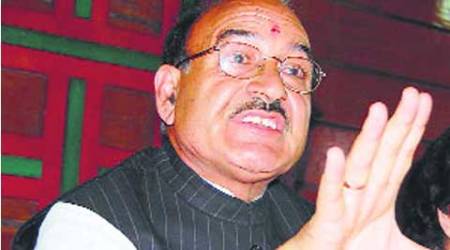 “If the tracker is detached, an alert is sent to our phone from the particular clinic. The tracker has helped curb illegal sex determinations,” said Satish Joshi, Indore district nodal officer, adding that cameras are installed in clinics to ensure the sonography test and form details belong to the same woman. (Representational Image)
“If the tracker is detached, an alert is sent to our phone from the particular clinic. The tracker has helped curb illegal sex determinations,” said Satish Joshi, Indore district nodal officer, adding that cameras are installed in clinics to ensure the sonography test and form details belong to the same woman. (Representational Image)
Even as the state health department is of the opinion that an active tracker installed in sonography machines is not a solution to the declining sex ratio, on Wednesday, a meeting of expert consultants and state commission for women mulled over the success of the Indore-model of active tracker and whether the same could be followed in Maharashtra to improve the faltering sex ratio.
According to an initial survey in Maharashtra, nine talukas in Ratnagiri, Raigad, Pune, Osmanabad, Yavatmal, Nanded, Parbhani, and Nandurbar have shown a declining trend of sex ratio. The state sex ratio, which stood at 960 in 2015, has dropped below 900, shows analysis of new birth registrations. While reassessment is underway, the new figures have already worried officials. Mumbai, however, has a sex ratio of 933.
On Tuesday, following a meeting, state Health Minister Deepak Sawant announced that a tracker may not serve as a solution to the declining sex ratio. The state government is appointing a special officer to monitor implementation of the Pre Conception and Pre Natal Diagnostic Techniques (PCPNDT) Act in state.
Misoprostol tablets, used for abortions, will be strictly categorised under schedule H for sales through prescriptions.
Indore, which began installing active trackers in sonography machines in 2014, is showing a stabilised sex ratio as opposed to Maharashtra districts. From 904, the sex ratio of the city has risen to 940 in 2016, data from 164 hospitals, in which trackers have been installed, show.
The tracker monitors sonography test of each pregnant woman in a clinic along with whether a sex determination test has been carried out. A radiologist or gynaecologist has to fill the online form for each patient, and the data is tracked by the collector’s office.
“If the tracker is detached, an alert is sent to our phone from the particular clinic. The tracker has helped curb illegal sex determinations,” said Satish Joshi, Indore district nodal officer, adding that cameras are installed in clinics to ensure the sonography test and form details belong to the same woman.
A similar project was initiated in Kolhapur in 2010 but could not be expanded to all clinics. Experts claim the tracker may be hacked and misused for sex determination. “We will study possible solutions to improve sex ratio and present the Indore model to the health minister for consideration,” said Vijaya Rahatkar, chairperson of the state commission for women, adding that continued monitoring of PCPNDT Act can help avoid illegal abortions.
Mahesh Zagade, divisional commissioner, Nashik, who monitors health in four districts, said that the state government has been notified about declining sex ratio in Pune and Nashik regions.
“There is no one solution to this. While trackers may help, strict vigil on Medical Termination of Pregnancy (MTP) Act and PCPNDT is necessary.”

